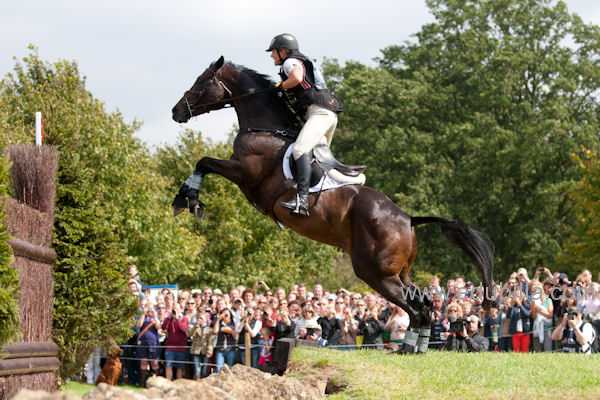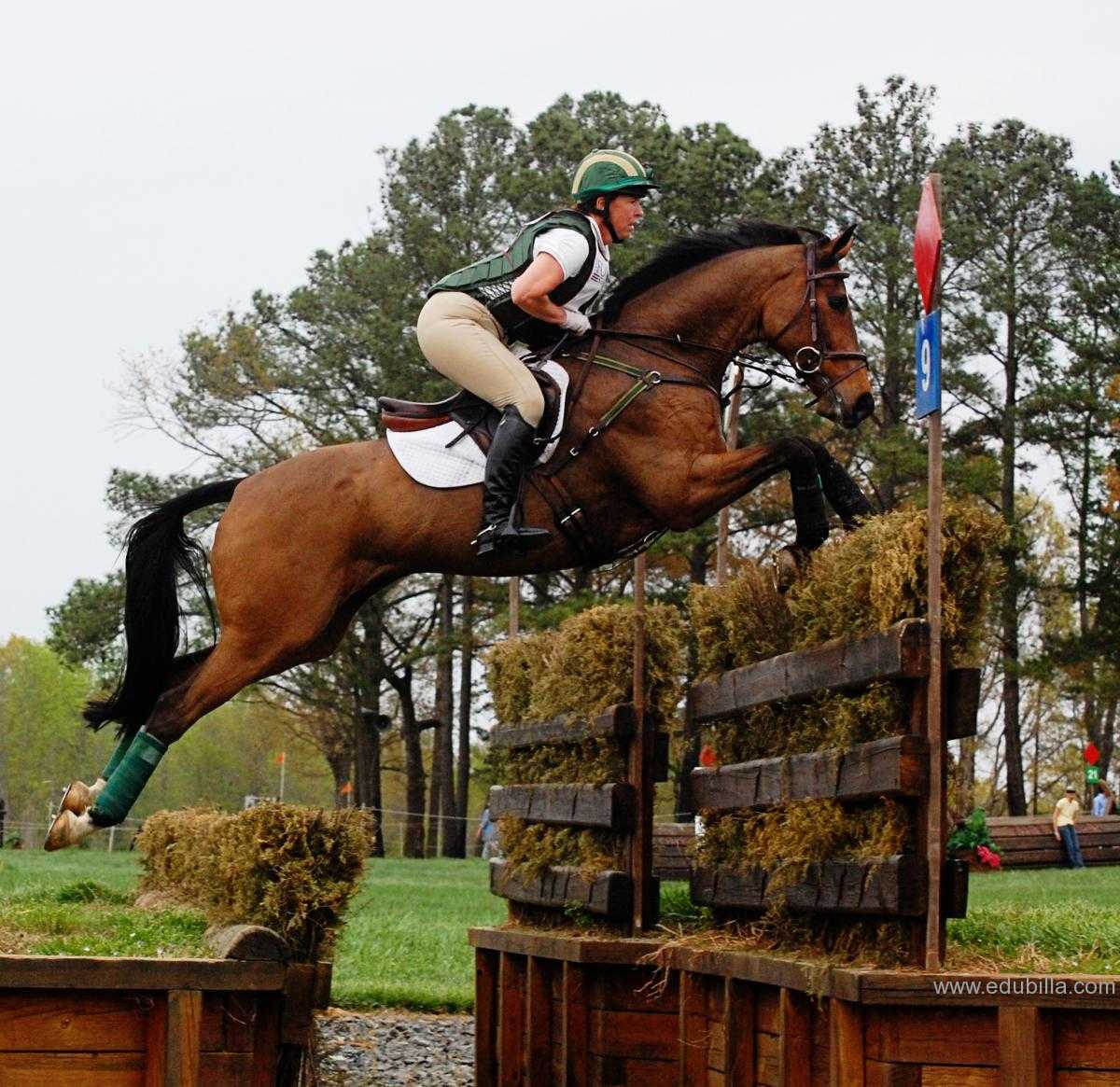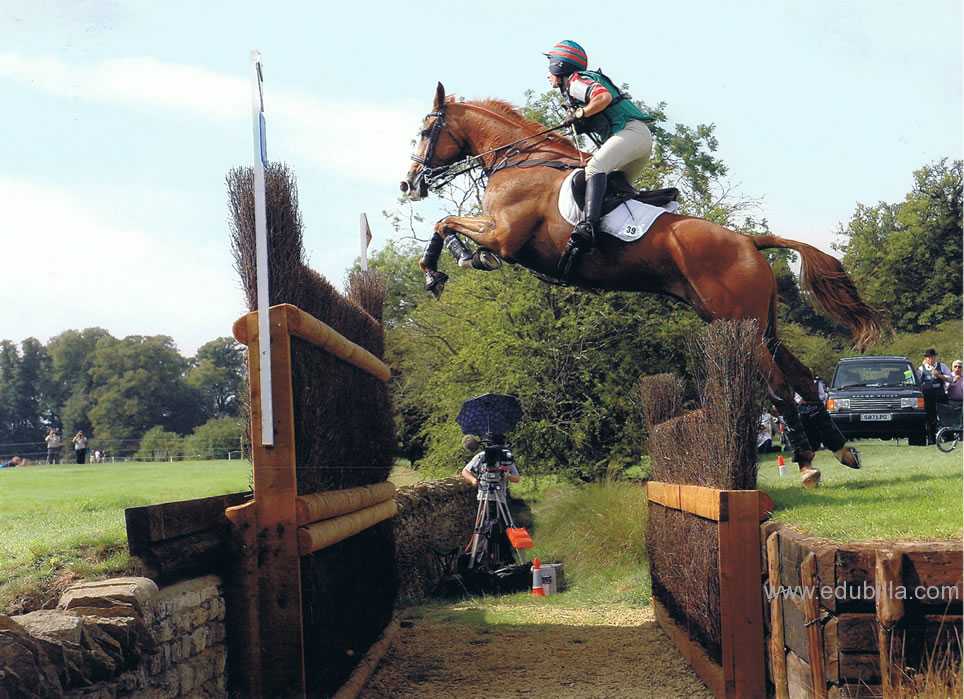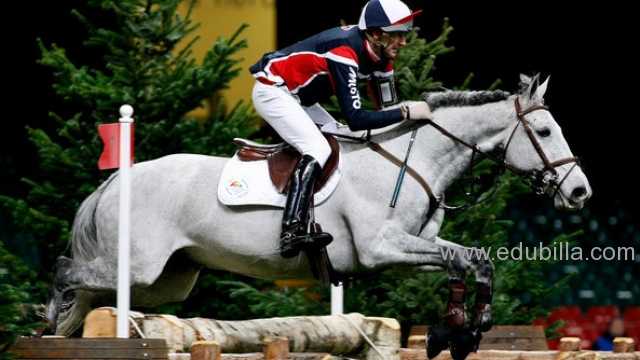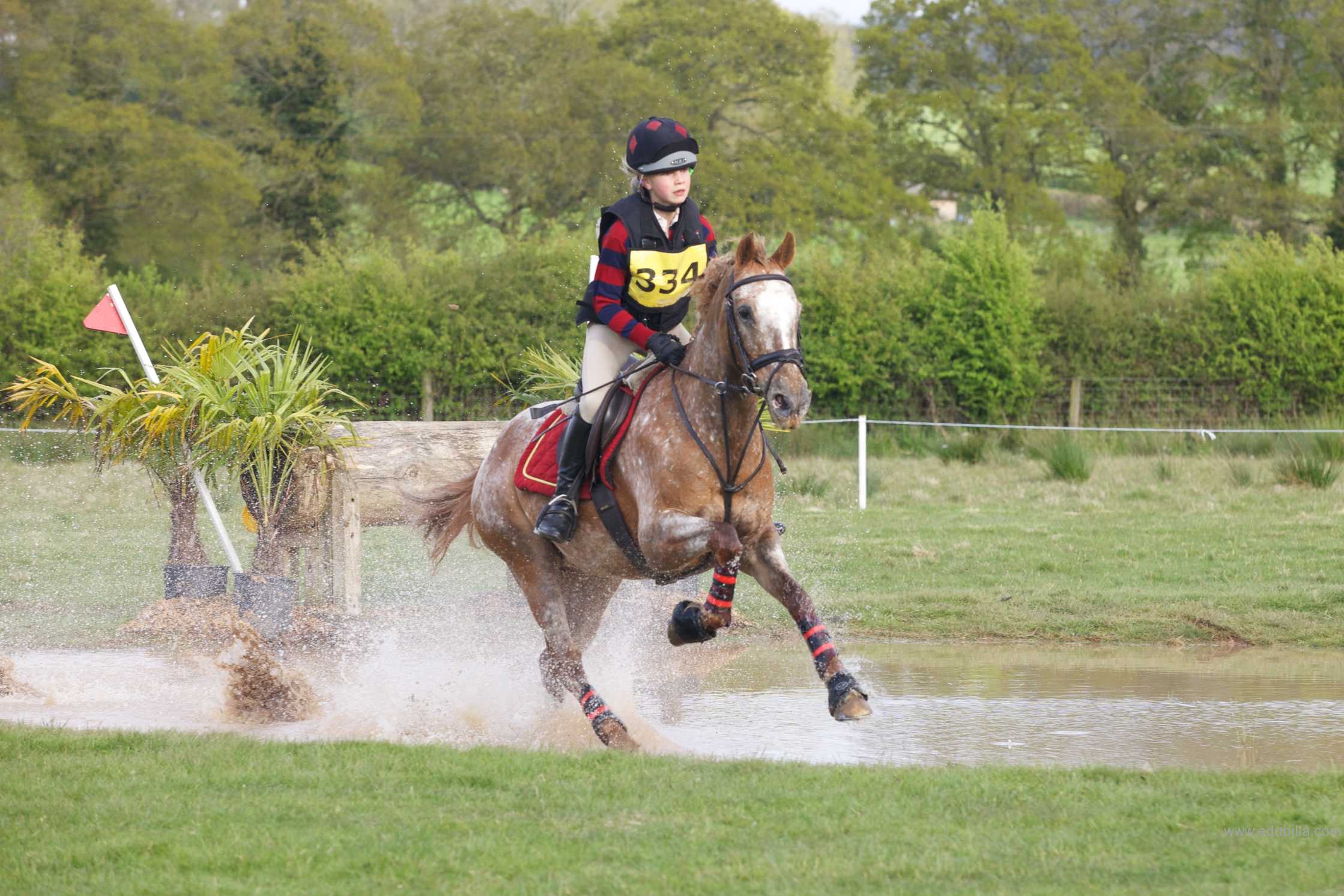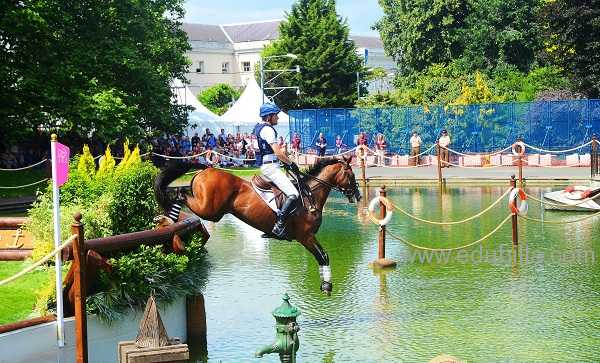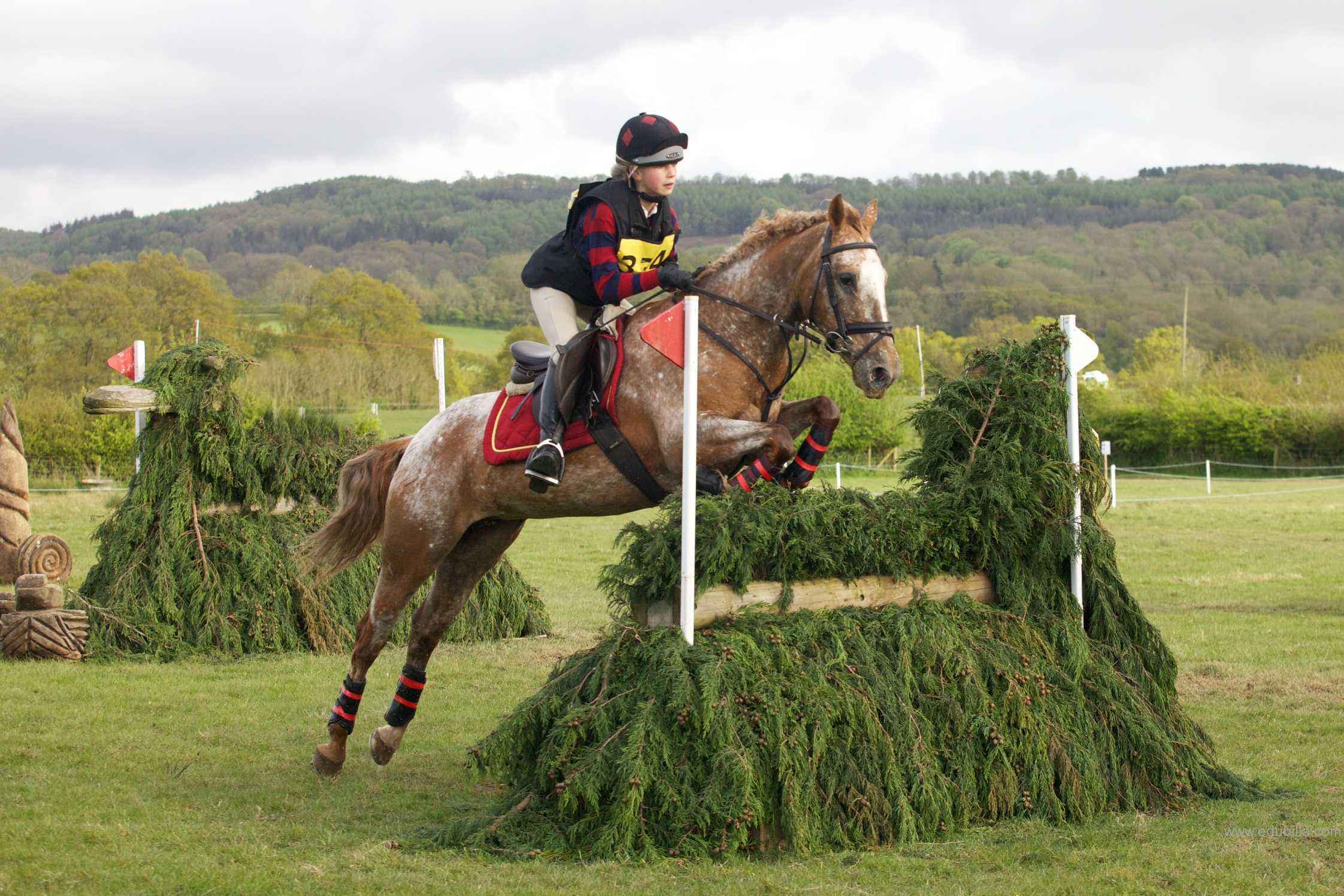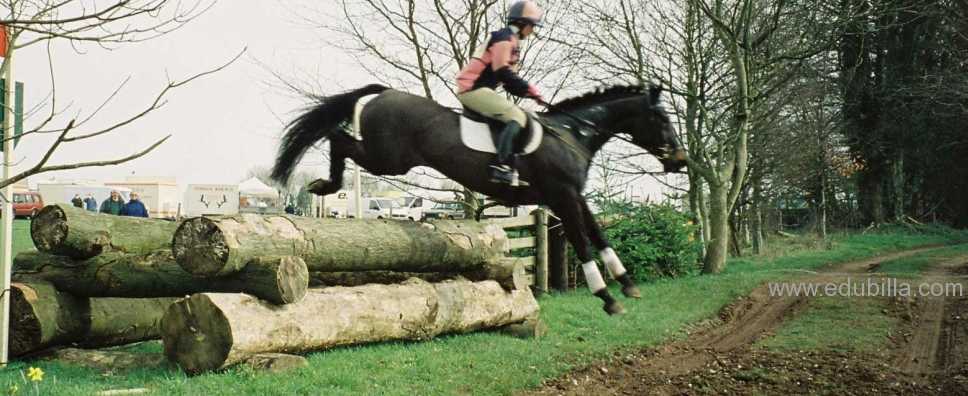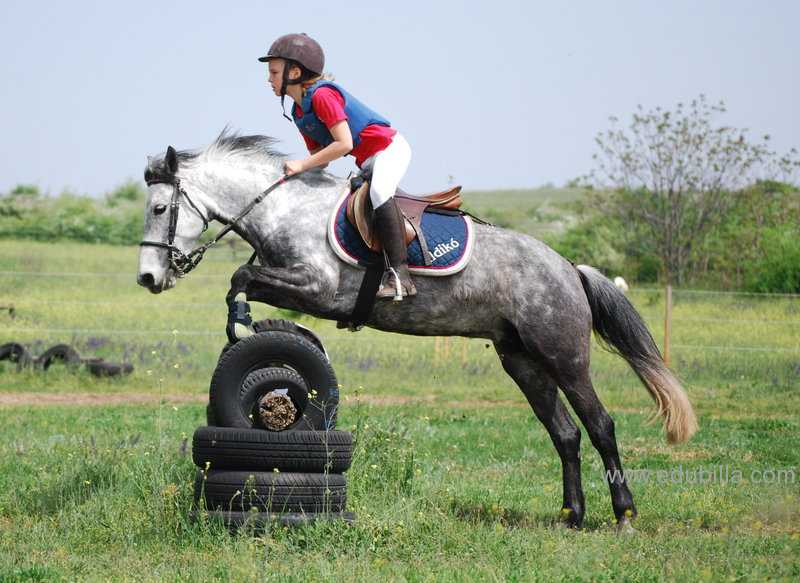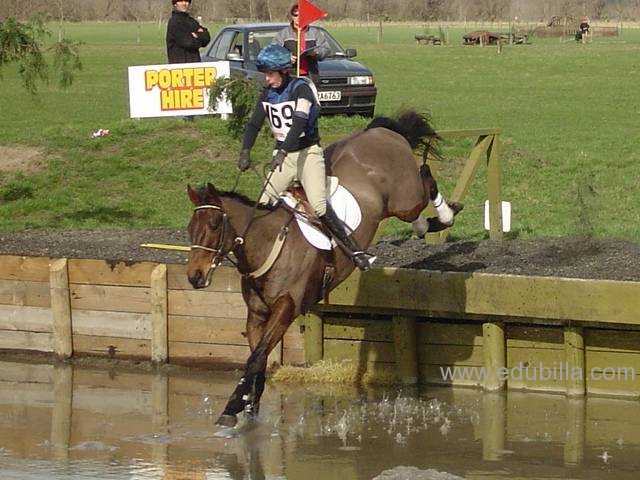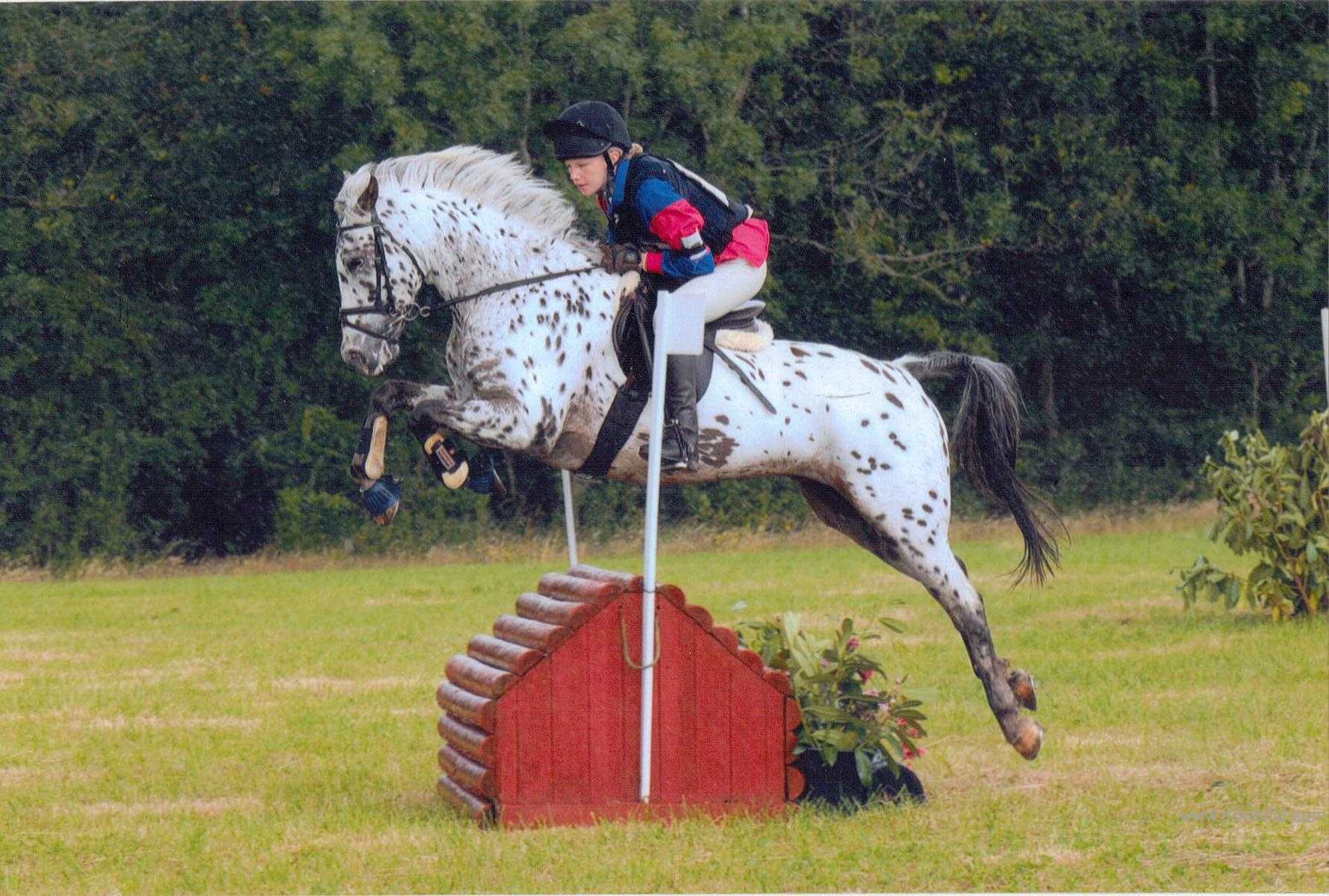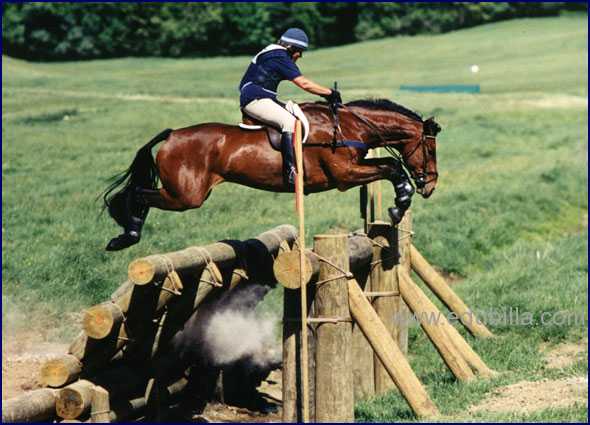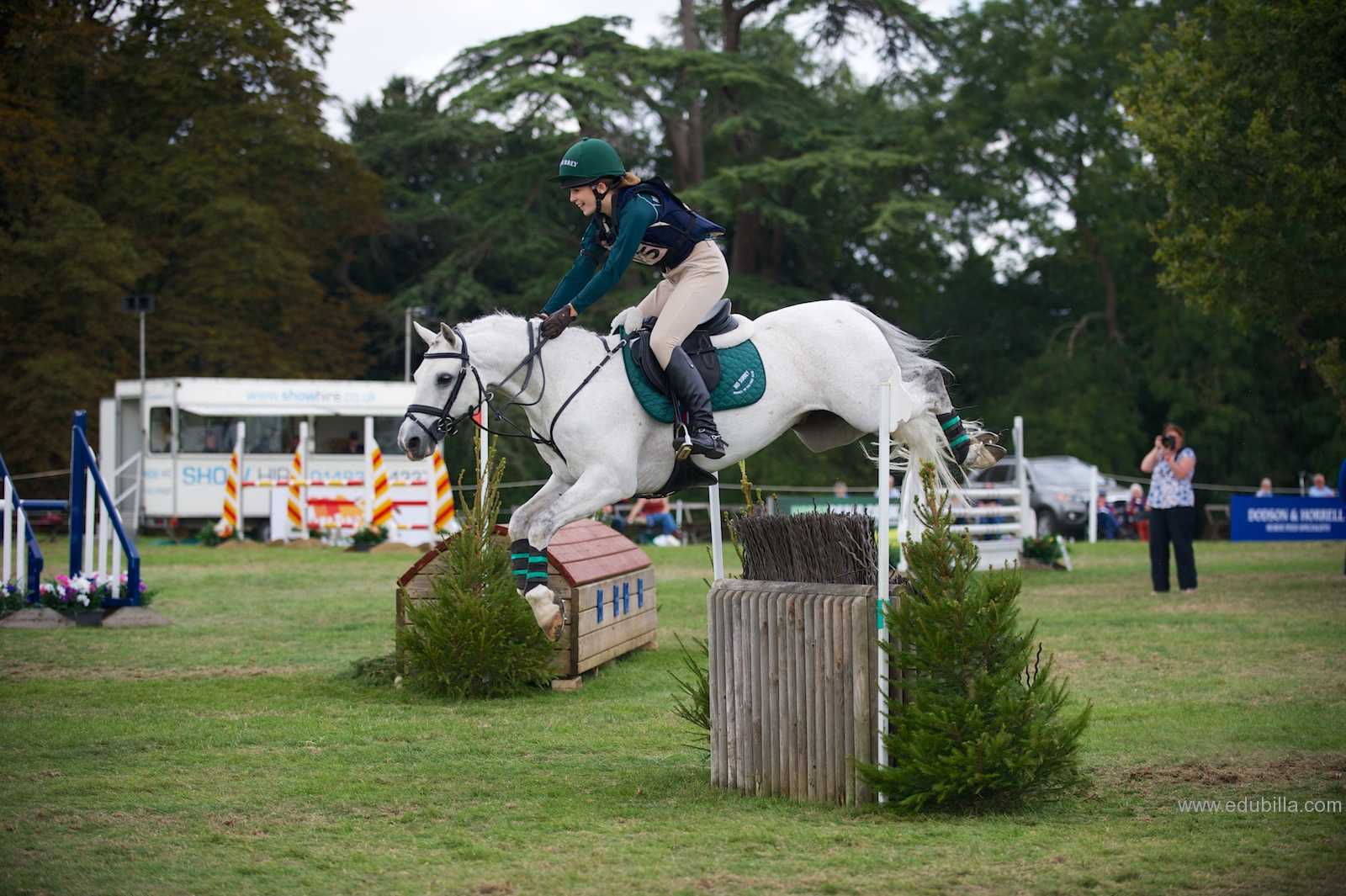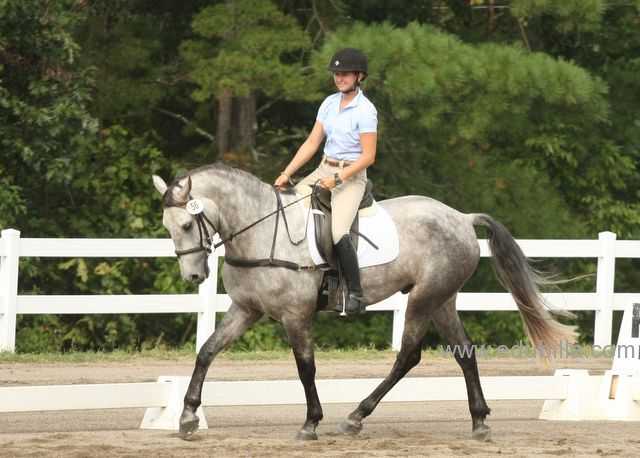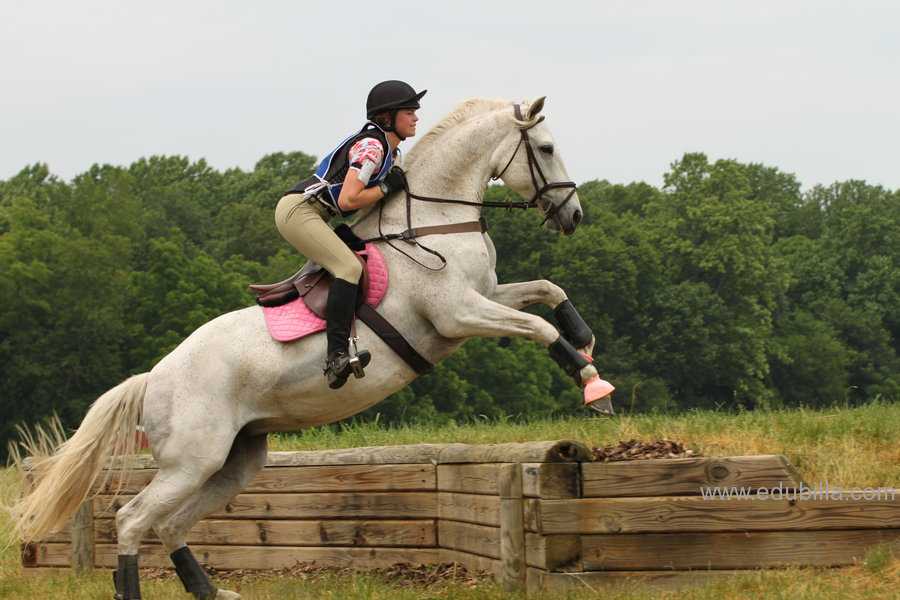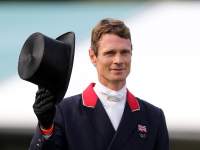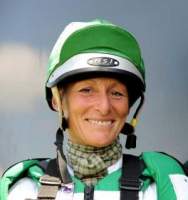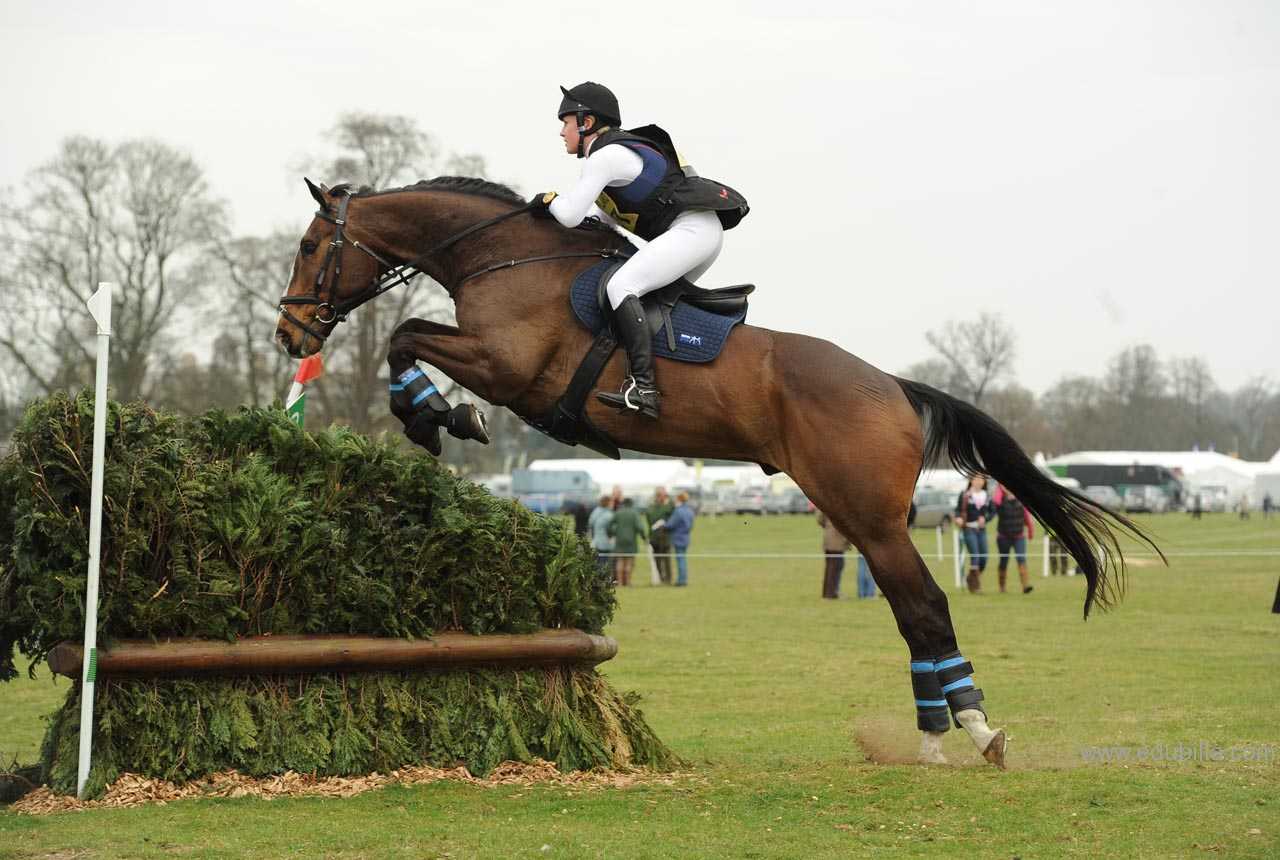
Overview Of Eventing
Eventing (also known as horse trials) is an equestrian event where a single horse and rider combination compete against other combinations across the three disciplines of dressage, cross-country, and show jumping. This event has its roots in a comprehensive cavalry test requiring mastery of several types of riding. The competition may be run as a one-day event (ODE), where all three events are completed in one day (dressage, followed by show jumping and then cross country) or a three-day event (3DE), which is more commonly now run over four days, with dressage on the first two days followed by cross country the next day and then show jumping in reverse order on the final day. Eventing was previously known as Combined Training, and the name persists in many smaller organizations. The term "Combined Training" is sometimes confused with the term "Combined Test" which refers to a combination of just two of the phases, most commonly dressage and show jumping
Dressage:
Dressage tests take place in a 60m x 20m ‘all-weather’ (sand-based) arena. Two competitions run at the same time – the Team medals are decided in one round and the Individual medals over three rounds. In each round the riders have to perform a Dressage Test, made up of a series of movements to be performed by the horse. The movements are set in a compulsory order for the first two rounds but, for the third and final round, the rider chooses what he or she will show the judges, and the programme is set to music. Horse and rider are marked by five judges who will be looking for accuracy of movement, calmness, suppleness and flexibility.
Jumping:
Jumping (known as ‘Show Jumping’ in the United Kingdom) takes place in an arena, around a course of approximately 15 fences. Jumping courses are now highly technical, requiring boldness, scope, power, accuracy and control from both horse and rider. The fences are designed so that if the horse hits them as they jump them, part or all of the fence will knock down and the rider will be penalised with ‘faults’. Faults are also awarded if the rider does not complete the course within a set time. The winner is the rider with the fewest faults; if there is a tie, the result is decided by jumping a shortened course as fast as possible without knocking fences down (“against the clock”).
Eventing:
The Eventing competition (formerly called the Three Day Event) takes place over four days. Days One and Two are Dressage, Day Three is Cross Country and Day four is Jumping.
The Dressage and Jumping phases are similar to the pure Dressage and Jumping competitions. In the Cross Country event, riders have to complete a course over natural terrain of between 6270m and 7410m. The course contains solid obstacles that test the nerve, boldness, scope and partnership of horse and rider; faults are awarded for run-outs, exceeding the specified time limit and falls of either horse or rider. The rider with the fewest penalties at the end of the competition is the winner, with the Team Medals decided by the best three scores from each nation.
Game Rules
The safety of every horse and rider that participate in the sport of Eventing is of the utmost importance and concern at the USEA. As such, there are myriad ongoing safety and research committees or task forces working towards advancing in the sport
USEA-sanctioned events are held to the highest standards of safety via USEA policies, and rules and regulations for horse and rider help to ensure the safety and welfare of both. The USEA works in conjunction with the USEF to establish and implement such policies and rules.
United States Equestrian Federation (USEF):
The rules for Eventing are under the jurisdiction of the United States Equestrian Federation (USEF), the national governing body for equestrian sports in the United States. All levels of competition (Beginner Novice through Advanced) are run in accordance with the USEF Rules for Eventing.
Members of the USEF may submit a rule change proposal directly to the USEF for consideration. All rule proposals directly pertaining to Eventing are reviewed by the USEA Board of Governors, with recommendations to the USEF Eventing Technical Committee. The USEF authorizes all rules for use in recognized competitions.
The USEF Rules for Eventing are published by the United States Eventing Association with permission of the United States Equestrian Federation as a courtesy to our members.
Federation Equestrian Internationale (FEI):
The Federation Equestrian Internationale (FEI) is the international governing body for equestrian sports. All CIC and CCI levels are run in accordance with the FEI Rules for Eventing.
Detailed Eventing Rules Can Be Downloaded From Documents
Equipments Need For Eventing
Bit:
The metal mouthpiece on a bridle, to which the reins are attached.
Blinkers:
The flaps on a bridle which stop a horse from seeing backwards or sideways (unauthorized in competition).
Breeches:
Trousers worn specifically for riding.
Bridle:
A harness that fits around a horse's head, holding the bit.
Cup:
An attachment to the wing of a jump, which holds the rail in position.
Fence:
1. in jumping, a vertical obstacle usually no higher than 1.6 metres but involving substantial width, constructed with colourful poles, planks, hedges, fake stone or brick, or flowers. 2. in the three-day event, a vertical obstacle usually less than 1.2 metres high and constructed with natural materials designed to fit with the terrain.
Gate:
A vertical fence made with planks, balustrades, gates or other items to present a solid obstacle.
Hunting Stock:
A broad band worn around a rider's neck.
Obstacle:
In show jumping and the three-day event, an object a horse must clear to complete the course, such as a fence, gate or water jump.
Oxer:
A single fence consisting of two elements which make a spread jump, such as parallel oxers.
Parallel Oxer:
An obstacle featuring front and back rails of equal height set wide apart to produce a spread, creating a difficult jump.
Rail:
In showjumping and the three-day event, a pole which makes up a part of some obstacles. SaddleThe seat for the rider on the back of a horse. Safety cupA special cup used to hold the back rail of a spread fence. This cup releases and drops the rail if the horse hits it.
Saddle:
The seat for the rider on the back of a horse.
Safety Cup:
A special cup used to hold the back rail of a spread fence. This cup releases and drops the rail if the horse hits it.
Spread:
A show jumping obstacle with an element of width, not just height, and which is generally higher and wider than the other spread jumps.
Spur:
A pointed device attached to a rider's boot heel and used to encourage a horse. VerticalAn obstacle which is difficult to jump because of its height.
Vertical:
An obstacle which is difficult to jump because of its height.
Vertical fence:
A straight up-and-down fence without width, creating a relatively difficult obstacle. Water jumpAn obstacle requiring a horse to jump over a wide expanse of water, usually with a low hedge or fence at the leading edge.
Water Jump:
An obstacle requiring a horse to jump over a wide expanse of water, usually with a low hedge or fence at the leading edge.
Whip:
A long, thin, hand-held device used to encourage a horse.
History Of Eventing
Eventing is the most complete combined competition discipline and demands of the competitor and horse considerable experience in all branches of equitation. It covers every aspect of horsemanship: the harmony between horse and rider that characterise Dressage; the contact with nature, stamina and extensive experience essential for the Cross Country; the precision, agility and technique involved in Jumping.
Military background:
Developed to test and prepare cavalry horses, Eventing has a long and colourful history. Initially, the purpose was to create a competition in which officers and horses could be tested for any challenges that could occur on or off duty. It also provided a basis to compare training standards between the calvalries of different countries.
Keeping cool:
Since the 1996 Atlanta Games, extensive studies and research have taken place examining the effets of heat and humidity on horses taking part in equestrian events. The world’s experts have poured over the subject and the success of all the measures in place and the knowledge at hand for the 2008 Olympic Games proved invaluable. The wealth of information collected also serves as a great resource for amateur equestrians faced with adverse climatic conditions around the world.
Olympic history:
Equestrian sports featured on the Olympic programme of the Paris Games in 1900, with jumping events, and were then withdrawn until the 1912 Games in Stockholm. Since then, this sport has been on the Olympic programme with remarkable regularity.
Until 1948, only men competed in the events, as the riders had to be officers. This restriction was lifted in 1951, and, since the Helsinki Games in 1952, women have competed with men in the mixed events. They competed first in dressage, then gradually in the other equestrian events.
From the three disciplines that make up equestrian, eventing is the most demanding. Indeed, it combines not only jumping and dressage, but also a long cross-country course, on mixed terrain with sometimes imposing natural or artificial obstacles.
At the 2008 Games in Beijing, Canada’s Ian Millar did particularly well winning the silver medal in the team jumping, 36 years after his first participation in the Olympic Games in Munich in 1972. At 61, he was the oldest medallist at the Beijing Games.
Origin Of Eventing
First Eventing competition:
The first Eventing competition was recorded in France in 1902 and became an Olympic sport in 1912.
Eventing in the UK started in 1949 when Badminton Horse Trials were held for the first time. Since then, Britain has become one of the most successful nations in the history of the sport, with more than
270 medals in 99 years of Olympic, World and European competition.
First Eventing Olympics competition:
France, the first occurrence of eventing in the Olympics was in 1912 when Count Clarence von Rosen, Master of the Horse to the King of Sweden, devised the first event.
First woman:
Although women had been allowed to ride in equestrian events since 1952, it wasn't until Helena du Pont competed for the United States at the 1964 Tokyo Games that Eventing saw its first woman representing her country.
Governing Bodies
International Federation for Equestrian Sports:
The International Federation for Equestrian Sports (FEI) is the international governing body of equestrian sports.
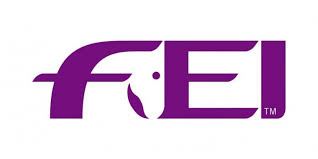
The FEI headquarters are in Lausanne, Switzerland. An FEI code of conduct protects the welfare of the horses from physical abuse or doping.
History of FEI:
The FEI was formed in 1921 with the joining of the national organizations of Belgium (BEL), Denmark (DEN), France (FRA), Italy (ITA), Japan (JPN), Norway (NOR), Sweden (SWE) and the United States of America (USA). Today, there are 132 National Equestrian Federations affiliated with the FEI.
Events:
Olympic and Paralympic Games
FEI World Equestrian Games
World Cup:
-Dressage World Cup
-Show Jumping World Cup
-World Cup Driving
-Vaulting championships
World, continental and regional championships
To Visit FEI Click Here
Awards Related To Eventing
Equestrian Western Australia:
The Breakaway Trophy:
Will be presented to the rider 18 years and over (from the beginning of the calendar year in which the rider turns 18) who has gained the most grading points on any horse or horses during the season. Points will be awarded in accordance with National Leaderboards and Rankings (EA rule15 and FEI art 506 2.1). Points will only be awarded if a qualifying result is obtained. The Trophy will be held for 1 year.
Des Robinson Memorial Trophy:
Will be presented to a rider under 18 years (until the end of the calendar year in which the rider turns 18) who has gained the most grading points on any horse or horses during the season. Points will be awarded in accordance with National Leaderboards and Rankings (EA rule 15 and FEI art 506 2.1). Points will only be awarded if a qualifying result is obtained. The Trophy will be held for 1 year.
The Egoline Perpetual Trophy:
Will be presented to the owner of the horse who has gained the most grading points during the season. Points will be awarded in accordance with National Leaderboards and Rankings (EA rule 15 and FEI art 506 2.1). Points will only be awarded if a qualifying result is obtained. The Trophy will be held for 1 year.
Patron's Award:
The Patron’s Award is designed to recognise outstanding personal achievement and/or contribution by one member, in each of the five disciplines. The respective Equestrian WA Committees choose the winner of the Patron’s Award. Each year the Patron of the Equestrian WA Branch presents a $200 cash award to each of the recipients.
Sheila Cooke Award:
A cash award of $200 will be presented to the event rider who, during the past season, has displayed the necessary degree of ability, dedication and sporting spirit likely to take them to the highest level of competition. The nominee’s willingness to contribute to the sport of eventing will also be taken into account. The selection of the award recipient and the payment made will be decided by the Eventing Committee. The award may be used for training, travelling or other financial assistance, as deemed necessary by the Committee.
Colin Dunham Memorial Award:
Will be presented to the volunteer of the year for eventing. The recipient does not have to be a member of Equestrian WA, nor do they have to be a rider to be eligible for the award. Any person in the eventing community may vote. All eventing clubs are invited to submit three nominates for people they feel are deserving of the award. The award, together with the supporting trophy, are kindly donated by Phoebe Johnson.
The Saddles Plus Rising Star Award:
The Saddles Plus Rising Star Award is designed to reward a horse and rider combination that has not previously ever received any eventing grading points, and has been successful throughout the year in official WA eventing competition.
Awards - United States Eventing Association:
Charles Owen Technical Merit Award:
The Charles Owen Technical Merit Award was founded by the USEA Professional Horsemens’ Council. The hope is that this award will provide incentives for riders who demonstrate safe and appropriate cross-country technique, and will also educate riders and trainers as to what constitutes safe riding across country. Riders entered in the designated divisions will automatically be judged during their cross-country rounds and will receive score sheets with written comments, which will provide valuable feedback for them and their trainers. Judges qualified to evaluate riders to receive the award are: Level III and IV ICP instructors, USEF licensed eventing officials, and USET Senior Team riders.
Blue Ribbon Award:
The Blue Ribbon Program is a stepping stone to achieving the Eventing Medals and then heading to the top of the leaderboard. The USEA will post the names of Blue Ribbon qualified horses and riders on the awards section of the USEA website on a monthly basis. Award certificates will be sent out quarterly to each rider who achieves the appropriate qualifications.
The Illinois Dressage and Combined Training Association Award:
Beginner Novice Green Horse Award:
This award is for horses with USEA Beginner Novice scores that do not qualify for the Adult Amateur or Young Rider divisions because the rider has competed at or above the Training level in the past 5 years. The horse may qualify for other awards at the recognized level with a different rider. The points earned at this level will not count towards Horse of the Year points or Rider of the Year points. The horse may not have competed above USEA Novice level at any time.
Novice Green Horse Award:
This award is for horses with USEA Novice scores that do not qualify for the Amateur or Young Rider divisions because the rider has competed at or above the Preliminary level in the past 5 years. The horse may qualify for other awards at the recognized level with a different rider. The points earned at this level will not count towards Horse of the Year points or Rider of the Year points. The horse may not have competed above USEA Training level at any time.
Sample Documents Of Eventing
-Michael Jordan

